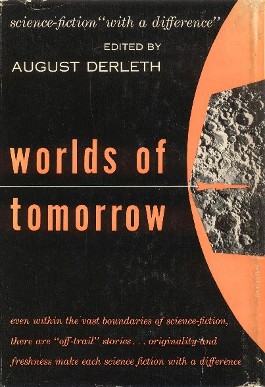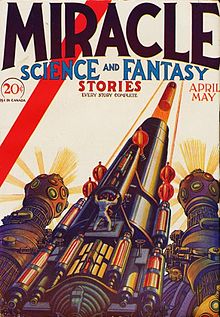
Sword and sorcery (S&S) or heroic fantasy is a subgenre of fantasy characterized by sword-wielding heroes engaged in exciting and violent adventures. Elements of romance, magic, and the supernatural are also often present. Unlike works of high fantasy, the tales, though dramatic, focus on personal battles rather than world-endangering matters. Sword and sorcery commonly overlaps with heroic fantasy. The genre originated from the early-1930s works of Robert E. Howard. The term "sword and sorcery" was coined by Fritz Leiber in the May 1961 issue of the fantasy fanzine Amra, to describe Howard and the stories that were influenced by his works. In parallel with "sword and sorcery", the term "heroic fantasy" is used, although it is a more loosely defined genre.

A campaign setting is usually a fictional world which serves as a setting for a role-playing game or wargame campaign. A campaign is a series of individual adventures, and a campaign setting is the world in which such adventures and campaigns take place. Usually a campaign setting is designed for a specific game or a specific genre of game. There are numerous campaign settings available both in print and online. In addition to published campaign settings available for purchase, many game masters create their own settings, often referred to as "homebrew" settings or worlds.
Weird fiction is a subgenre of speculative fiction originating in the late 19th and early 20th centuries. Weird fiction either eschews or radically reinterprets traditional antagonists of supernatural horror fiction, such as ghosts, vampires, and werewolves. Writers on the subject of weird fiction, such as China Miéville, sometimes use "the tentacle" to represent this type of writing. The tentacle is a limb-type absent from most of the monsters of European folklore and gothic fiction, but often attached to the monstrous creatures created by weird fiction writers, such as William Hope Hodgson, M. R. James, Clark Ashton Smith, and H. P. Lovecraft.

Unknown was an American pulp fantasy fiction magazine, published from 1939 to 1943 by Street & Smith, and edited by John W. Campbell. Unknown was a companion to Street & Smith's science fiction pulp, Astounding Science Fiction, which was also edited by Campbell at the time; many authors and illustrators contributed to both magazines. The leading fantasy magazine in the 1930s was Weird Tales, which focused on shock and horror. Campbell wanted to publish a fantasy magazine with more finesse and humor than Weird Tales, and put his plans into action when Eric Frank Russell sent him the manuscript of his novel Sinister Barrier, about aliens who own the human race. Unknown's first issue appeared in March 1939; in addition to Sinister Barrier, it included H. L. Gold's "Trouble With Water", a humorous fantasy about a New Yorker who meets a water gnome. Gold's story was the first of many in Unknown to combine commonplace reality with the fantastic.

Fantasy literature is literature set in an imaginary universe, often but not always without any locations, events, or people from the real world. Magic, the supernatural and magical creatures are common in many of these imaginary worlds. Fantasy literature may be directed at both children and adults.
The New Weird is a literary genre that emerged in the 1990s through early 2000s with characteristics of weird fiction and other speculative fiction subgenres. M. John Harrison is credited with creating the term "New Weird" in the introduction to The Tain in 2002. The writers involved are mostly novelists who are considered to be part of the horror or speculative fiction genres but who often cross genre boundaries. Notable authors include K. J. Bishop, Paul Di Filippo, M. John Harrison, Jeffrey Ford, Storm Constantine, China Miéville, Alastair Reynolds, Justina Robson, Steph Swainston, Mary Gentle, Michael Cisco, Jeff VanderMeer and Conrad Williams.

Elements of the supernatural and the fantastic were an element of literature from its beginning. The modern genre is distinguished from tales and folklore which contain fantastic elements, first by the acknowledged fictitious nature of the work, and second by the naming of an author. Works in which the marvels were not necessarily believed, or only half-believed, such as the European romances of chivalry and the tales of the Arabian Nights, slowly evolved into works with such traits. Authors like George MacDonald (1824–1905) created the first explicitly fantastic works.

Weird West is a term used for the hybrid genres of fantasy Western, horror Western and science fiction Western. The term originated with DC's Weird Western Tales in 1972, but the idea is older as the genres have been blended since the 1930s, possibly earlier, in B-movie Westerns, comic books, movie serials and pulp magazines. Individually, the hybrid genres combine elements of the Western genre with those of fantasy, horror and science fiction respectively.
Rubber science is a science fiction term describing a quasi-scientific explanation for an aspect of a science fiction setting. Rubber science explanations are fictional but convincing enough to avoid upsetting the suspension of disbelief. Rubber science is a feature of most genres of science fiction, with the exception of hard science fiction.

Space Western is a subgenre of science fiction that uses the themes and tropes of Westerns within science-fiction stories in an outer space setting. Subtle influences may include exploration of new, lawless frontiers, while more overt influences may feature actual cowboys in outer space who use rayguns and ride robotic horses. Although initially popular, a strong backlash against perceived hack writing caused the genre to become a subtler influence until the 1980s, when it regained popularity. A further critical reappraisal occurred during the 2000s due to critical acclaim for Firefly.
Speculative poetry is a genre of poetry that focusses on fantastic, science fictional and mythological themes. It is also known as science fiction poetry or fantastic poetry. It is distinguished from other poetic genres by being categorized by its subject matter, rather than by the poetry's form. Suzette Haden Elgin defined the genre as "about a reality that is in some way different from the existing reality."
Fantasy television is a genre of television programming featuring elements of the fantastic, often including magic, supernatural forces, or exotic fantasy worlds. Fantasy television programs are often based on tales from mythology and folklore, or are adapted from fantasy stories in other media. The boundaries of fantasy television often overlap with science fiction and horror but also realistic fiction.

Beyond Time and Space is an anthology of science fiction stories edited by American writer August Derleth. It was first published by Pellegrini & Cudahy in 1950. Several of the stories had originally appeared in the magazines The Century, The Atlantic Monthly, The Strand, Blue Book, Blackwood's Magazine, Weird Tales, Amazing Stories, Astounding Stories, Maclean's, The American Legion Magazine and Startling Stories. A heavily abridged paperback edition was issued by Berkley Books in 1958.

Worlds of Tomorrow is an anthology of science fiction stories edited by American writer August Derleth. It was first published by Pellegrini & Cudahy in 1953. Many of the stories had originally appeared in the magazines Worlds Beyond, Fantastic, Fantasy, The Magazine of Science Fiction, Fantasy and Science Fiction, If, Fantastic Adventures, Future, Startling Stories, Astounding Stories, Weird Tales, The Fantasy Fan and Thrilling Wonder Stories. Abridged editions were published by Weidenfeld & Nicolson in 1955, Berkley Books in 1958 and Four Square Books in 1963.

Science-Fiction Plus was an American science fiction magazine published by Hugo Gernsback for seven issues in 1953. In 1926, Gernsback had launched Amazing Stories, the first science fiction magazine, but he had not been involved in the genre since 1936, when he sold Wonder Stories. Science-Fiction Plus was initially in slick format, meaning that it was large-size and printed on glossy paper. Gernsback had always believed in the educational power of science fiction, and he continued to advocate his views in the new magazine's editorials. The managing editor, Sam Moskowitz, had been a reader of the early pulp magazines, and published many writers who had been popular before World War II, such as Raymond Z. Gallun, Eando Binder, and Harry Bates. Combined with Gernsback's earnest editorials, the use of these early writers gave the magazine an anachronistic feel.

Fantasy is a genre of speculative fiction involving magical elements, typically set in a fantasy world and usually inspired by mythology or folklore. The term "fantasy" can also be used to describe a "work of this genre", usually literary.

The following outline is provided as an overview of and topical guide to fantasy:

Gods and demons fiction or Shenmo fiction is a subgenre of Chinese fantasy fiction that revolves around the deities, immortals, demons and monsters of Chinese mythology. The term shenmo xiaoshuo, coined in the early 20th century by the writer and literary historian Lu Xun, literally means "gods and demons novel". Classical works of shenmo fiction include the novels Journey to the West and Investiture of the Gods.

Science-fiction and fantasy magazines began to be published in the United States in the 1920s. Stories with science-fiction themes had been appearing for decades in pulp magazines such as Argosy, but there were no magazines that specialized in a single genre until 1915, when Street & Smith, one of the major pulp publishers, brought out Detective Story Magazine. The first magazine to focus solely on fantasy and horror was Weird Tales, which was launched in 1923, and established itself as the leading weird fiction magazine over the next two decades; writers such as H.P. Lovecraft, Clark Ashton Smith and Robert E. Howard became regular contributors. In 1926 Weird Tales was joined by Amazing Stories, published by Hugo Gernsback; Amazing printed only science fiction, and no fantasy. Gernsback included a letter column in Amazing Stories, and this led to the creation of organized science-fiction fandom, as fans contacted each other using the addresses published with the letters. Gernsback wanted the fiction he printed to be scientifically accurate, and educational, as well as entertaining, but found it difficult to obtain stories that met his goals; he printed "The Moon Pool" by Abraham Merritt in 1927, despite it being completely unscientific. Gernsback lost control of Amazing Stories in 1929, but quickly started several new magazines. Wonder Stories, one of Gernsback's titles, was edited by David Lasser, who worked to improve the quality of the fiction he received. Another early competitor was Astounding Stories of Super-Science, which appeared in 1930, edited by Harry Bates, but Bates printed only the most basic adventure stories with minimal scientific content, and little of the material from his era is now remembered.













